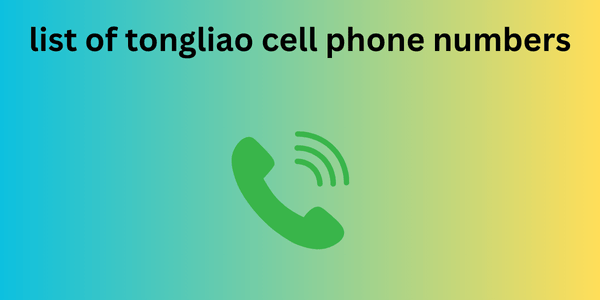To start, think about why the data you collect might be appealing to your customers , and then present it in a way that makes it easily digestible, shareable, and fun. With a little know-how and a dash of creativity, your ‘boring data’ can become engaging, just like some of the examples below.
Pay attention and turn your boring data into content you can be proud of.
Transforming Data into an Interactive Tool
Brands have added significant value by considering the value that data could have for the general public (wouldn’t you want to know if you could earn more by doing the same work elsewhere?) and then presenting it as a fun tool for users to engage with.
Interactive Tests
Interactive quizzes are powerful for turning boring data into something fun and engaging. They allow users to interact directly with the data, making the experience more personal and memorable. For example list of tongliao cell phone numbers a health website might use a quiz to help users understand risk factors for certain diseases based on various data points.
Quizzes can also help break down complex data into easier-to-understand pieces. Each question in a quiz can represent a different data point, and the answers can help users see how those points relate to their own lives. Additionally, companies use quizzes to collect data from their audience, providing valuable insight into their preferences, behaviors, and knowledge levels.
Interactive Surveys
Quizzes, interactive surveys are another effective way to turn data into an engaging tool. Surveys simplify data by asking users to choose from predefined options. They make it easy for users to participate even if they don’t understand the data presented.
Polls also give users a voice, making them feel more engaged and invested in the content. Users can see how their answers compare to others, which can lead to more engagement. For example, a news site might use a poll to gauge public opinion on a trending topic and present the results in real time.

The key takeaway here is that useful content can increase audience engagement, keeping them on the site longer. Think about the value of your data and present it in an easily digestible way.
Take Your Users Through History
digital-storytelling-and-social-media-1024x536.png
Source Postmediasolutions
By comparing brand data to information already publicly available, they can discover the story behind all those mind-boggling numbers. Storytelling is big news in content marketing; it can humanize a brand, make it seem more relatable and relevant in the real world; all of which are great insights for the bottom line.
Select Relevant Historical Data
The first step is to identify data that has historical significance for your target audience. This data could be about important events, trends, or comparisons between different time periods. Remember, relevance is key – the data should make sense to your target audience.
Establish Historical Context
Present your data in a broader historical context. This helps your users understand the significance of the data and its impact on the course of history. This might include discussing the events leading up to the data point or describing the historical period in which the data was collected.
Use Storytelling Techniques
Data can be difficult to interact with on its own, but turning it into a narrative can bring it to life. Use storytelling techniques to create a compelling narrative around your data. This might include creating characters, setting scenes, or building tension.
Visualize Your Data
Visuals are a powerful tool for presenting data in an engaging way. Use infographics, charts, timelines, or interactive maps to display your data. They can make complex data more accessible and help users visualize historical trends and patterns.
Make Connections with Today
Help your users understand the importance of historical data by connecting it to the present. This might include showing how past trends shaped current conditions or how understanding the past can influence decisions today.
Encourage Interaction
Make your historical data tour an interactive experience. This could include quizzes to test your users’ knowledge, polls to get their opinions, or discussion forums for them to share their thoughts.
The takeaway: Think about the narrative behind your data. How can you explain it? Who would be interested in this story? Answer these questions and you’ll have the beginnings of great content.
Add Some Fun to Your Data and Create a Game
Data in its raw form can be boring and difficult to process. But by turning that data into an interactive game, you can make it engaging, educational, and fun for your audience. Here’s how to turn those boring spreadsheets into exciting games that captivate your users.
Determine the Purpose of the Game
Before you create a game, think about what you want your audience to learn or gain from it. This could be understanding complex data, learning about trends, or simply engaging more with your content . Having a clear purpose will guide the design and development of your game.
Choose the Right Game Type
The type of game you choose should be appropriate for your purpose and the nature of your data. Quizzes are great for testing knowledge, puzzles can help users understand complex relationships, and simulations can show the impact of different variables.
Include Your Data
Now comes the most important part – putting your data into the game. This could include using the data to set challenges, score points, or determine the outcome of the game. Make sure the data is presented in a simplified and understandable way without losing its essence.
Make It Interactive
Interactivity is critical to engaging users in your game. This could include allowing users to manipulate data, make data-driven decisions, or compete with others based on their understanding of data.
Provide Feedback
Feedback helps users understand how well they interacted with the data and what they learned from it. It can include providing scores, leaderboards, or explanations for correct answers.
